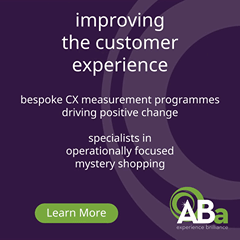Comment: loyalty programmes back in fashion
Customer acquisition costs have spiralled over recent years, especially through digital channels, at a time when customers have been increasingly shopping around for the best deals in a cost-of-living crisis. Is it any wonder, therefore, that we are seeing a flight to focusing on customer retention and at the forefront of this is the loyalty programme.
Retail loyalty undoubtedly changed when Tesco launched its Clubcard, with the help of pioneering data specialists Dunnhumby, back in 1995 but I’d argue that there have been few seismic developments since that point. The reality is that loyalty programmes have gone in and out of fashion over the intervening years as retailers have all too often operated poorly designed schemes that have merely given away margin to shoppers rather than engendered any noticeable loyalty that has genuinely driven incremental sales.
This is something of a cyclical game and right now we are at one of the peaks of retailers’ interest in loyalty as they fight for customers in a very competitive marketplace. Recently fast fashion giant Shein acknowledged that in order to hit its ambitious sales targets it needs to convert new customers into repeat buyers. In 2022 around 60% of its total of 142 million customers shopped on the platform for the first time and by 2025 it aims to convert most of its shoppers into loyal customers.
Its key challenge is that its core customers are GenZs who are one of the most open group to moving their custom to the next new thing. They have exhibited little evidence of loyalty to date, which suggests Shein has a tough task on its hands with its retention strategy. It would certainly be well advised to consider the potential for devising a credible loyalty mechanic that would appeal to its core customers.
It would not be alone in committing funds to this area. Evidence of the appetite for loyalty programmes can be seen in research from Eagle Eye that found 80% of businesses surveyed plan to invest more in loyalty technology this year. For 54% of companies, part of their plans include making it easier for consumers to earn and redeem rewards.
Clearly the intention is to add more stickiness to their programmes, which is undoubtedly a move that pushes against an open door judging by the finding that 69% of companies have enjoyed increased membership in the past year and 25% of these have reported impressive growth of at least 40% during this period.
Among retailers upgrading their loyalty programmes is the John Lewis Partnership that is working on what it describes as a “game-changing” creation involving bringing together the My John Lewis and My Waitrose loyalty programmes. This will lead to a pan-Partnership scheme to launch in 2024 that will integrate its high street, online and app touch-points. Over at Marks & Spencer the team has come up with an innovative spin on its Sparks customer loyalty scheme with the premium Sparks Plus, which costs £120 a year and offers benefits such as unlimited next-day delivery and a free hot drink each month.
Meanwhile JD Sports has joined the Nike Connected Partnership loyalty programme that enables members to access exclusive footwear and clothing as well as unlocking reward bonuses and limited collections in addition to attending exclusive events. Whereas the old school loyalty programmes were simply about collecting points and redeeming them for rewards the newer schemes are much more focused on giving members access to products and events that are not available to non-members. Tiers of access can then be created determined by the value of the individual customer, which is a powerful mechanic for generating loyalty and driving sales.
Within these current challenging retail markets and cash-constrained shoppers being incredibly selective about where they spend their money the loyalty programme is a tool that should be used with increasing intelligence by retailers across all parts of the sector.














